-
 Bitcoin
Bitcoin $107,758.1435
-1.45% -
 Ethereum
Ethereum $2,490.6114
-3.32% -
 Tether USDt
Tether USDt $1.0004
0.00% -
 XRP
XRP $2.2042
-2.04% -
 BNB
BNB $651.4818
-1.12% -
 Solana
Solana $145.8782
-3.02% -
 USDC
USDC $0.9999
0.00% -
 TRON
TRON $0.2819
-1.39% -
 Dogecoin
Dogecoin $0.1621
-4.58% -
 Cardano
Cardano $0.5658
-4.18% -
 Hyperliquid
Hyperliquid $37.8181
-6.63% -
 Sui
Sui $2.8404
-4.91% -
 Bitcoin Cash
Bitcoin Cash $481.3703
-2.30% -
 Chainlink
Chainlink $13.0043
-4.79% -
 UNUS SED LEO
UNUS SED LEO $9.0464
0.26% -
 Avalanche
Avalanche $17.6115
-4.39% -
 Stellar
Stellar $0.2359
-2.11% -
 Toncoin
Toncoin $2.7507
-3.93% -
 Shiba Inu
Shiba Inu $0.0...01126
-4.41% -
 Litecoin
Litecoin $86.1256
-3.27% -
 Hedera
Hedera $0.1530
-3.13% -
 Monero
Monero $312.7785
-2.81% -
 Dai
Dai $1.0000
-0.01% -
 Ethena USDe
Ethena USDe $1.0001
-0.02% -
 Polkadot
Polkadot $3.3287
-5.55% -
 Bitget Token
Bitget Token $4.3840
-4.00% -
 Uniswap
Uniswap $6.8370
-10.63% -
 Pepe
Pepe $0.0...09548
-4.25% -
 Aave
Aave $260.2526
-6.11% -
 Pi
Pi $0.4658
-5.45%
How to use the Center of Gravity (COG) indicator for Bitcoin swing trades?
The Center of Gravity (COG) indicator helps Bitcoin swing traders spot trend reversals by measuring price momentum around a weighted average.
Jul 04, 2025 at 06:21 pm
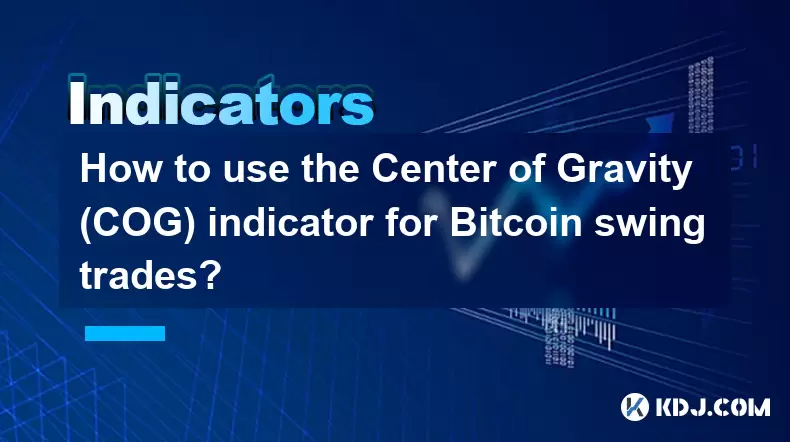
Understanding the Center of Gravity (COG) Indicator
The Center of Gravity (COG) indicator is a technical analysis tool primarily used to identify potential trend reversals and momentum shifts in financial markets, including cryptocurrency trading. Unlike traditional oscillators like RSI or MACD, the COG focuses on calculating the weighted average price over a specified period, helping traders pinpoint equilibrium points where buying or selling pressure may be exhausted.
In Bitcoin swing trading, the COG helps traders anticipate market turning points by analyzing the balance between bullish and bearish forces. The calculation involves summing up the closing prices multiplied by their position in the lookback period and then dividing by the sum of weights. This results in a line that oscillates around a zero baseline, often with signal lines for added clarity.
Setting Up the COG Indicator for Bitcoin Trading
Before using the COG for Bitcoin swing trades, it's essential to configure the indicator properly within your trading platform. Most platforms, such as TradingView or MetaTrader, allow users to add custom indicators through their script libraries.
- Open your preferred trading platform
- Navigate to the "Indicators" section
- Search for "Center of Gravity" or paste the Pine Script code if manually adding
- Adjust the settings according to your trading timeframe; a common setting is 14 periods for intraday swing trades
- Apply the indicator to the BTC/USD chart
Once applied, the COG will appear either as a standalone oscillator below the price chart or overlaid directly onto the candlesticks, depending on the version used. Some versions include color-coded crossovers or signal lines to assist in identifying trade setups.
Interpreting COG Signals for Bitcoin Swing Trades
When applying the COG indicator to Bitcoin trading, there are several key signals to watch:
- Zero Line Crosses: When the COG crosses above the zero line, it indicates strengthening bullish momentum. Conversely, a cross below zero suggests increasing bearish dominance.
- Signal Line Crossovers: Many COG implementations include a signal line (often a smoothed moving average of the COG line). A bullish crossover occurs when the COG line rises above the signal line, while a bearish crossover happens when it falls below.
- Divergence Patterns: Divergence between the COG and price action can signal potential reversals. For example, if Bitcoin makes a new high but the COG fails to do so, this could indicate weakening momentum and an impending pullback.
Traders should always cross-reference these signals with other tools, such as volume indicators or support/resistance levels, to increase the probability of successful trades.
Entry and Exit Strategies Using the COG Indicator
For Bitcoin swing traders, timing entries and exits based on COG signals requires precision and discipline. Here’s how to structure your approach:
- Wait for a confirmed signal: Don’t act on a single bar crossing; wait for the next candle to close in confirmation before entering a trade.
- Use stop-loss orders: Place stop-loss orders just beyond recent swing highs or lows to manage risk effectively.
- Trail profits: As the trade moves in your favor, consider trailing your stop to lock in gains without exiting too early.
- Monitor for exit signals: Watch for the COG line to reverse direction or cross back over the signal line as a potential exit cue.
By combining these elements, you create a structured framework for managing trades that aligns with the dynamic nature of Bitcoin’s price movements.
Risk Management Considerations with COG-Based Trades
Even with reliable signals from the COG indicator, proper risk management is crucial in Bitcoin swing trading due to its volatility. Here are some best practices:
- Allocate only a small percentage of your portfolio to each trade—typically no more than 2–5%.
- Never ignore broader market conditions: Events like regulatory announcements or macroeconomic shifts can override technical signals.
- Maintain a consistent reward-to-risk ratio: Aim for at least 2:1 on every trade to ensure profitability over time.
- Keep a trading journal: Record all COG-based trades, including entry/exit points, reasons for the trade, and outcomes.
These steps help protect capital while allowing you to refine your strategy through experience and data.
Frequently Asked Questions
What timeframes work best with the COG indicator for Bitcoin trading?
The COG indicator performs well on 1-hour, 4-hour, and daily charts for swing trading purposes. Shorter timeframes may produce excessive noise, while longer ones offer fewer but potentially more reliable signals.
Can the COG indicator be used alongside other oscillators?
Yes, many traders combine the COG with tools like RSI or Stochastic to filter out false signals and confirm momentum shifts. Just ensure the additional indicators don't duplicate the same type of analysis.
Is the COG indicator suitable for scalping Bitcoin trades?
While technically possible, the COG is better suited for swing trading rather than scalping due to its lagging nature and focus on medium-term momentum shifts.
How often does the COG indicator repaint?
Some versions of the COG may slightly repaint during the formation of the current candle, especially those that include predictive smoothing. Traders should avoid relying solely on real-time signals until the candle closes.
Disclaimer:info@kdj.com
The information provided is not trading advice. kdj.com does not assume any responsibility for any investments made based on the information provided in this article. Cryptocurrencies are highly volatile and it is highly recommended that you invest with caution after thorough research!
If you believe that the content used on this website infringes your copyright, please contact us immediately (info@kdj.com) and we will delete it promptly.
- Bitcoin's Pattern Break: Are HODLers the Key to the Next Surge?
- 2025-07-04 18:50:12
- Bitcoin Price, Trump's Bill, and the $150K Dream: A NYC Take
- 2025-07-04 19:50:12
- Ethereum, LILPEPE, and the July Bounce: Will Pepe Steal ETH's Thunder?
- 2025-07-04 19:10:12
- Binance Institutional Loans: Unlocking 4x Leverage and Zero Interest for Whales
- 2025-07-04 19:15:12
- Bitcoin Bull Run: Analysts Eye Peak in Late 2025?
- 2025-07-04 19:20:13
- Pepe Indicators, Bullish Forecast: Can the Meme Coin Rally?
- 2025-07-04 19:25:12
Related knowledge

How to use the Center of Gravity (COG) indicator for Bitcoin swing trades?
Jul 04,2025 at 06:21pm
Understanding the Center of Gravity (COG) IndicatorThe Center of Gravity (COG) indicator is a technical analysis tool primarily used to identify potential trend reversals and momentum shifts in financial markets, including cryptocurrency trading. Unlike traditional oscillators like RSI or MACD, the COG focuses on calculating the weighted average price o...
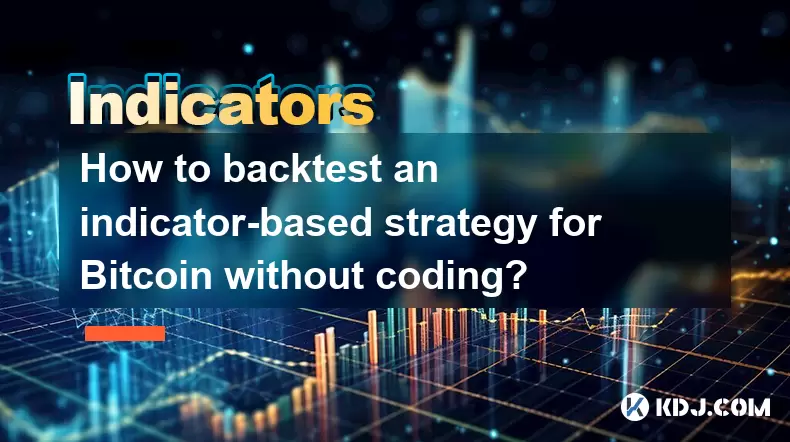
How to backtest an indicator-based strategy for Bitcoin without coding?
Jul 04,2025 at 06:50pm
Understanding Backtesting in Cryptocurrency TradingBacktesting is the process of evaluating a trading strategy by applying it to historical data to see how it would have performed. In the context of Bitcoin, backtesting allows traders to test their indicator-based strategies using past price movements and volume data. This helps identify whether a strat...

What is indicator confluence and why is it important for Bitcoin trading?
Jul 04,2025 at 03:14pm
Understanding the Concept of Indicator ConfluenceIndicator confluence refers to the alignment or agreement between multiple technical indicators when analyzing a financial asset, such as Bitcoin. Instead of relying on a single indicator to make trading decisions, traders use confluence to increase the probability of successful trades by ensuring that di...
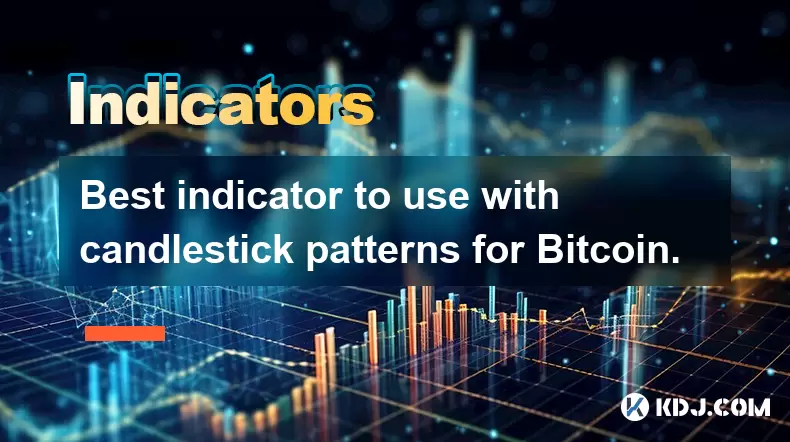
Best indicator to use with candlestick patterns for Bitcoin.
Jul 04,2025 at 12:36pm
Understanding the Role of Indicators with Candlestick PatternsIn the world of cryptocurrency trading, especially when dealing with Bitcoin, technical analysis plays a crucial role in identifying potential price movements. Traders often rely on candlestick patterns to forecast market behavior. However, these patterns alone may not always provide sufficie...
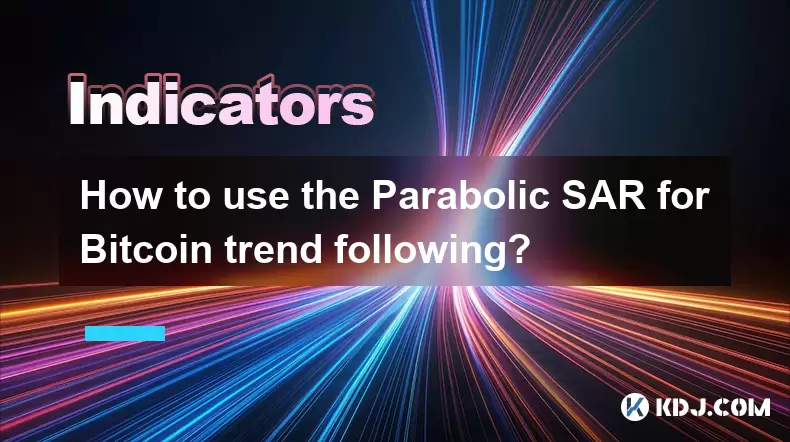
How to use the Parabolic SAR for Bitcoin trend following?
Jul 04,2025 at 05:21pm
Understanding the Parabolic SAR IndicatorThe Parabolic SAR (Stop and Reverse) is a technical analysis tool developed by J. Welles Wilder, primarily used to identify potential reversals in asset prices. In the context of Bitcoin trading, it serves as a crucial instrument for spotting entry and exit points during trending markets. The indicator appears on...
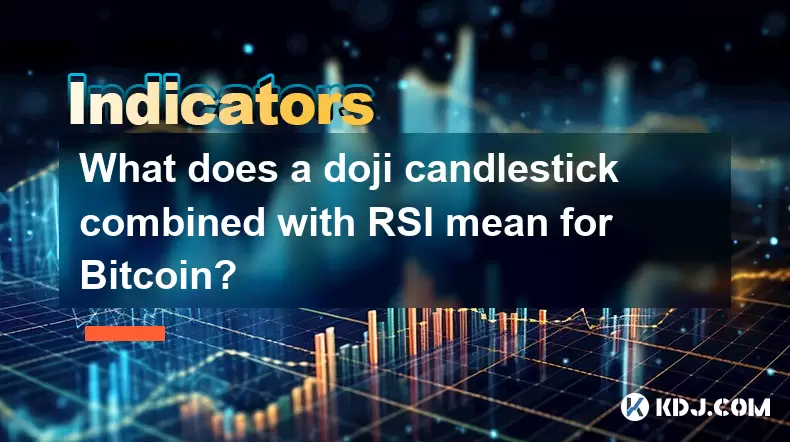
What does a doji candlestick combined with RSI mean for Bitcoin?
Jul 04,2025 at 03:08pm
Understanding the Doji Candlestick PatternA doji candlestick is a critical technical analysis pattern that signals market indecision. It forms when the opening and closing prices of an asset are nearly identical, resulting in a very small or nonexistent body with long upper and lower wicks. In the context of Bitcoin, this pattern often suggests a potent...

How to use the Center of Gravity (COG) indicator for Bitcoin swing trades?
Jul 04,2025 at 06:21pm
Understanding the Center of Gravity (COG) IndicatorThe Center of Gravity (COG) indicator is a technical analysis tool primarily used to identify potential trend reversals and momentum shifts in financial markets, including cryptocurrency trading. Unlike traditional oscillators like RSI or MACD, the COG focuses on calculating the weighted average price o...

How to backtest an indicator-based strategy for Bitcoin without coding?
Jul 04,2025 at 06:50pm
Understanding Backtesting in Cryptocurrency TradingBacktesting is the process of evaluating a trading strategy by applying it to historical data to see how it would have performed. In the context of Bitcoin, backtesting allows traders to test their indicator-based strategies using past price movements and volume data. This helps identify whether a strat...

What is indicator confluence and why is it important for Bitcoin trading?
Jul 04,2025 at 03:14pm
Understanding the Concept of Indicator ConfluenceIndicator confluence refers to the alignment or agreement between multiple technical indicators when analyzing a financial asset, such as Bitcoin. Instead of relying on a single indicator to make trading decisions, traders use confluence to increase the probability of successful trades by ensuring that di...

Best indicator to use with candlestick patterns for Bitcoin.
Jul 04,2025 at 12:36pm
Understanding the Role of Indicators with Candlestick PatternsIn the world of cryptocurrency trading, especially when dealing with Bitcoin, technical analysis plays a crucial role in identifying potential price movements. Traders often rely on candlestick patterns to forecast market behavior. However, these patterns alone may not always provide sufficie...

How to use the Parabolic SAR for Bitcoin trend following?
Jul 04,2025 at 05:21pm
Understanding the Parabolic SAR IndicatorThe Parabolic SAR (Stop and Reverse) is a technical analysis tool developed by J. Welles Wilder, primarily used to identify potential reversals in asset prices. In the context of Bitcoin trading, it serves as a crucial instrument for spotting entry and exit points during trending markets. The indicator appears on...

What does a doji candlestick combined with RSI mean for Bitcoin?
Jul 04,2025 at 03:08pm
Understanding the Doji Candlestick PatternA doji candlestick is a critical technical analysis pattern that signals market indecision. It forms when the opening and closing prices of an asset are nearly identical, resulting in a very small or nonexistent body with long upper and lower wicks. In the context of Bitcoin, this pattern often suggests a potent...
See all articles

























































































